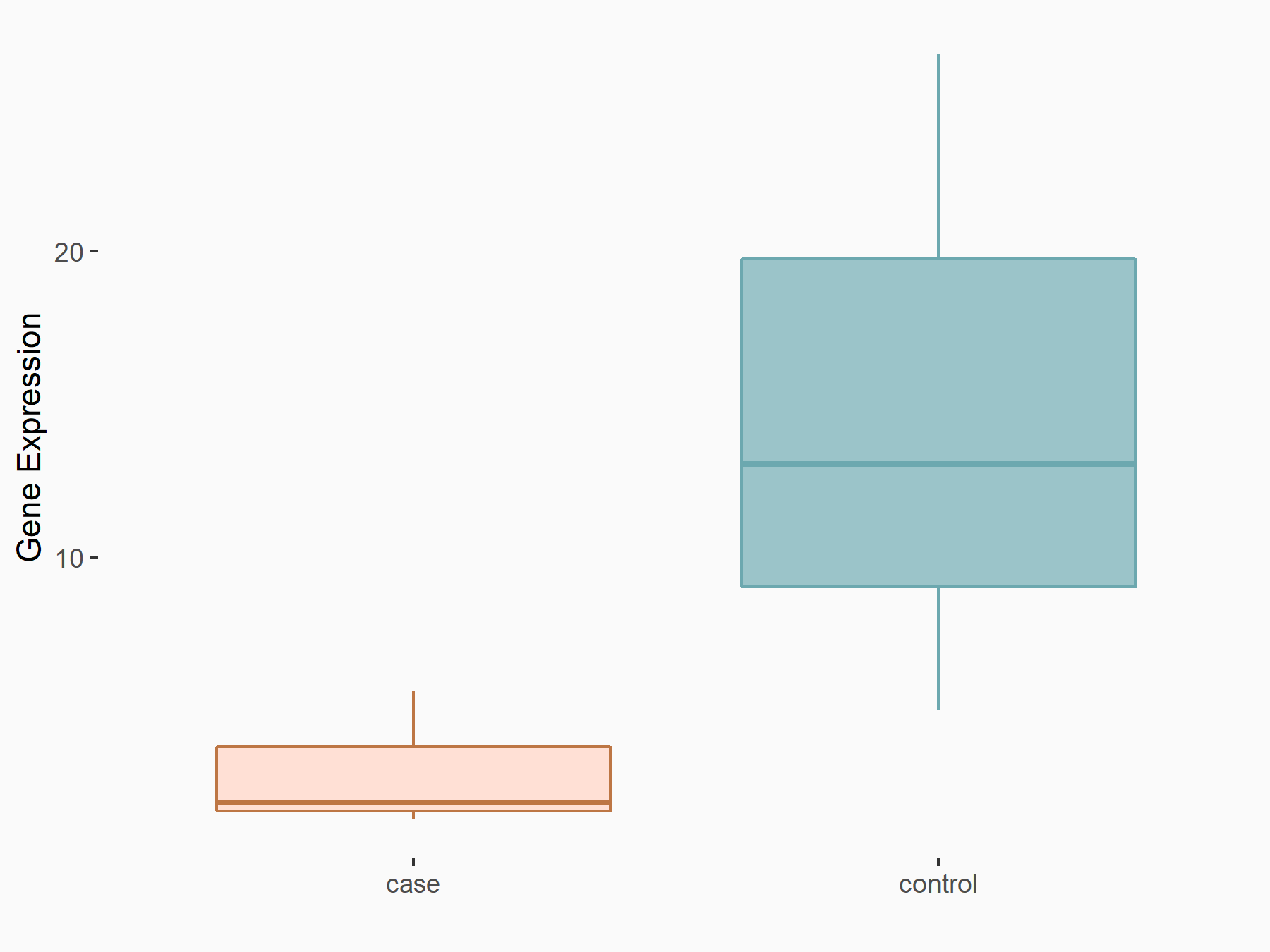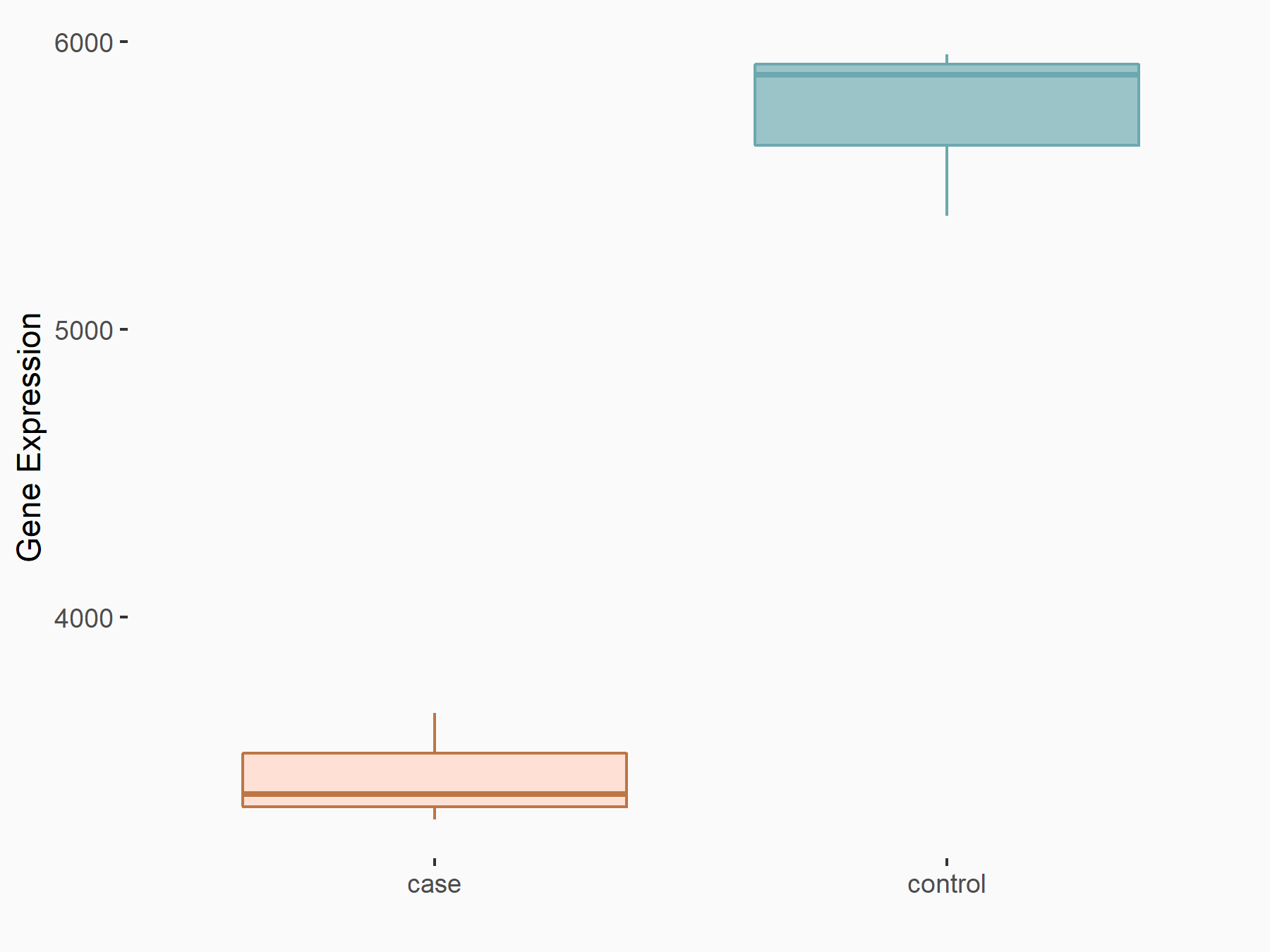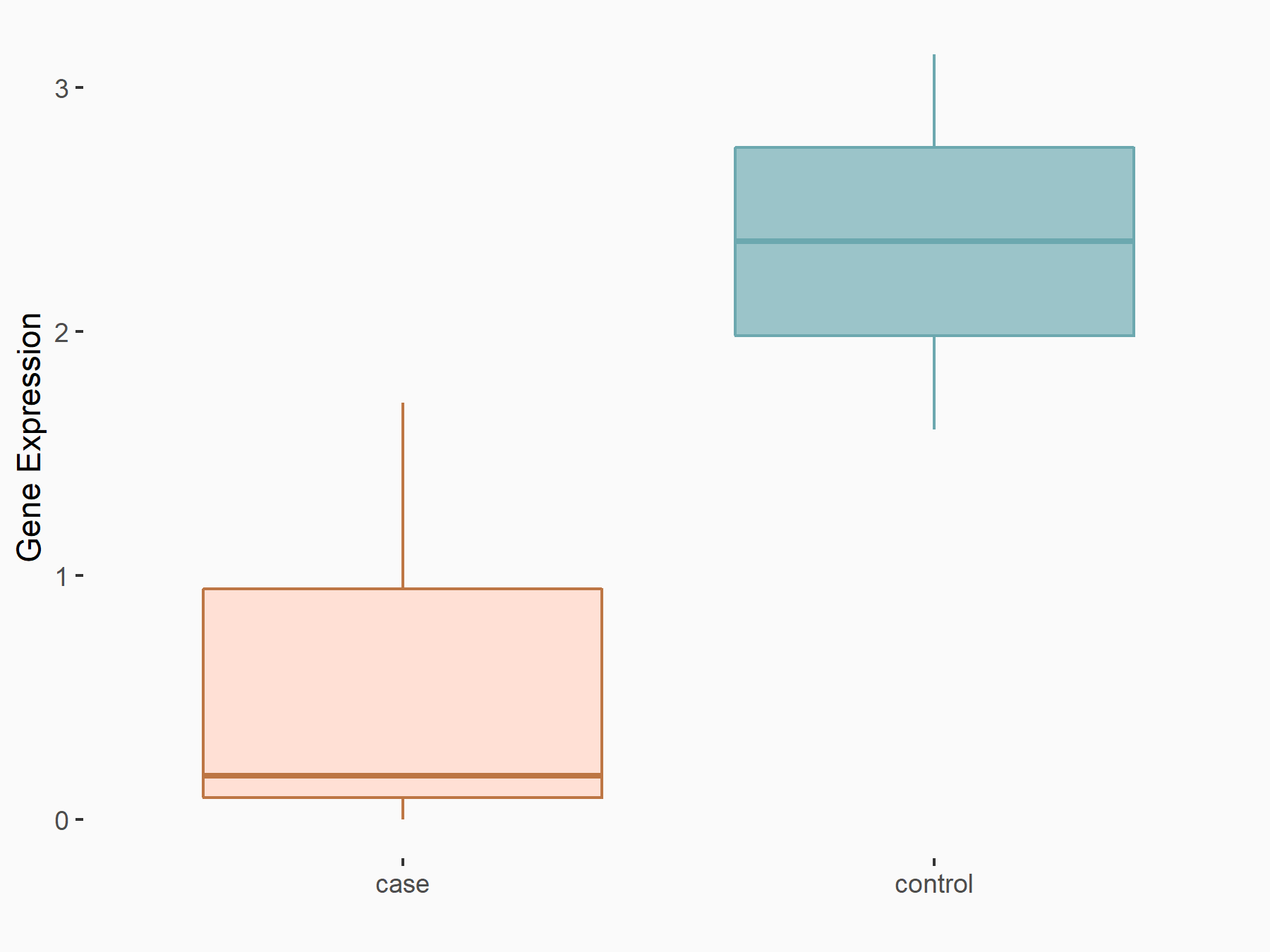m6A Target Gene Information
General Information of the m6A Target Gene (ID: M6ATAR00291)
Full List of m6A Methylation Regulator of This Target Gene and Corresponding Disease/Drug Response(s)
IGF1
can be regulated by the following regulator(s), and cause disease/drug response(s). You can browse detail information of regulator(s) or disease/drug response(s).
Browse Regulator
Browse Disease
Browse Drug
Methyltransferase-like 3 (METTL3) [WRITER]
| Representative RNA-seq result indicating the expression of this target gene regulated by METTL3 | ||
| Cell Line | DKO-1 cell line | Homo sapiens |
|
Treatment: METTL3 knockdown DKO-1 cell
Control: DKO-1 cell
|
GSE182382 | |
| Regulation |
  |
logFC: -2.21E+00 p-value: 2.40E-02 |
| More Results | Click to View More RNA-seq Results | |
| Representative RIP-seq result supporting the interaction between IGF1 and the regulator | ||
| Cell Line | MDA-MB-231 | Homo sapiens |
| Regulation | logFC: 6.27E+00 | GSE60213 |
| In total 1 item(s) under this regulator | ||||
| Experiment 1 Reporting the m6A Methylation Regulator of This Target Gene | [1] | |||
| Response Summary | The long-lived endocrine mutants - Snell dwarf, growth hormone receptor deletion and pregnancy-associated plasma protein-A knockout - all show increases in the N6-adenosine-methyltransferases (METTL3/14) that catalyze 6-methylation of adenosine (m6A) in the 5' UTR region of select mRNAs. In addition, these mice have elevated levels of YTHDF1, which recognizes m6A and promotes translation by a cap-independent mechanism. Augmented translation by cap-independent pathways facilitated by m6A modifications contribute to the stress resistance and increased healthy longevity of mice with diminished GH and Insulin-like growth factor I (IGF1) signals. | |||
| Target Regulation | Up regulation | |||
| Responsed Disease | Ageing-related disease | ICD-11: 9B10-9B60 | ||
| Pathway Response | Nucleotide excision repair | hsa03420 | ||
| Cell Process | DNA repair and mitochondrial stress | |||
| In-vitro Model | Mouse fibroblasts (Major cellular components of loose connective tissue) | |||
Methyltransferase-like 14 (METTL14) [WRITER]
| Representative RNA-seq result indicating the expression of this target gene regulated by METTL14 | ||
| Cell Line | BMDM | Mus musculus |
|
Treatment: METTL14 knockout mice BMDM
Control: Wild type mice BMDM
|
GSE153512 | |
| Regulation |
  |
logFC: -7.37E-01 p-value: 4.88E-20 |
| More Results | Click to View More RNA-seq Results | |
| In total 1 item(s) under this regulator | ||||
| Experiment 1 Reporting the m6A Methylation Regulator of This Target Gene | [1] | |||
| Response Summary | The long-lived endocrine mutants - Snell dwarf, growth hormone receptor deletion and pregnancy-associated plasma protein-A knockout - all show increases in the N6-adenosine-methyltransferases (METTL3/14) that catalyze 6-methylation of adenosine (m6A) in the 5' UTR region of select mRNAs. In addition, these mice have elevated levels of YTHDF1, which recognizes m6A and promotes translation by a cap-independent mechanism. Augmented translation by cap-independent pathways facilitated by m6A modifications contribute to the stress resistance and increased healthy longevity of mice with diminished GH and Insulin-like growth factor I (IGF1) signals. | |||
| Target Regulation | Up regulation | |||
| Responsed Disease | Ageing-related disease | ICD-11: 9B10-9B60 | ||
| Pathway Response | Nucleotide excision repair | hsa03420 | ||
| Cell Process | DNA repair and mitochondrial stress | |||
| In-vitro Model | Mouse fibroblasts (Major cellular components of loose connective tissue) | |||
YTH domain-containing family protein 1 (YTHDF1) [READER]
| Representative RNA-seq result indicating the expression of this target gene regulated by YTHDF1 | ||
| Cell Line | AGS cell line | Homo sapiens |
|
Treatment: shYTHDF1 AGS
Control: shNC AGS
|
GSE166972 | |
| Regulation |
  |
logFC: -1.17E+00 p-value: 4.12E-02 |
| More Results | Click to View More RNA-seq Results | |
| In total 1 item(s) under this regulator | ||||
| Experiment 1 Reporting the m6A Methylation Regulator of This Target Gene | [1] | |||
| Response Summary | The long-lived endocrine mutants - Snell dwarf, growth hormone receptor deletion and pregnancy-associated plasma protein-A knockout - all show increases in the N6-adenosine-methyltransferases (METTL3/14) that catalyze 6-methylation of adenosine (m6A) in the 5' UTR region of select mRNAs. In addition, these mice have elevated levels of YTHDF1, which recognizes m6A and promotes translation by a cap-independent mechanism. Augmented translation by cap-independent pathways facilitated by m6A modifications contribute to the stress resistance and increased healthy longevity of mice with diminished GH and Insulin-like growth factor I (IGF1) signals. | |||
| Target Regulation | Up regulation | |||
| Responsed Disease | Ageing-related disease | ICD-11: 9B10-9B60 | ||
| Pathway Response | Nucleotide excision repair | hsa03420 | ||
| Cell Process | DNA repair and mitochondrial stress | |||
| In-vitro Model | Mouse fibroblasts (Major cellular components of loose connective tissue) | |||
Insulin-like growth factor-binding protein 3 (IGFBP3) [READER]
| In total 1 item(s) under this regulator | ||||
| Experiment 1 Reporting the m6A Methylation Regulator of This Target Gene | [2] | |||
| Response Summary | overexpression of IGFBP3 induced apoptosis and enhanced cisplatin response in vitro and confirmed that the suppression is in part by blocking Insulin-like growth factor I (IGF1) signaling. IGFBP3 is effective in lung cancer cells with high IGF1 signaling activity and imply that relevant biomarkers are essential in selecting lung cancer patients for IGF1-targeted therapy. | |||
| Responsed Disease | Lung cancer | ICD-11: 2C25 | ||
| Responsed Drug | Cisplatin | Approved | ||
| Pathway Response | MAPK signaling pathway | hsa04010 | ||
| Cell Process | Cell apoptosis | |||
| In-vitro Model | NCI-H460 | Lung large cell carcinoma | Homo sapiens | CVCL_0459 |
| HCC2429 | Lung non-small cell carcinoma | Homo sapiens | CVCL_5132 | |
| In-vivo Model | Paired littermates of F2 (Igfbp3+/+:KrasG12D/+ and Igfbp3-/-:KrasG12D/+) were sacrificed ranging from ages 4 to 7 months. After preliminary analysis of F2 mice, we sacrificed 5-month-old Igfbp3+/+:KrasG12D/+ and Igfbp3-/-KrasG12D/+ mice that had been backcrossed to S129 background for representative analysis. The lung tissue was immediately removed after the mice were sacrificed and visible pleural nodules were counted directly. | |||
Lung cancer [ICD-11: 2C25]
| In total 1 item(s) under this disease | ||||
| Experiment 1 Reporting the m6A-centered Disease Response | [2] | |||
| Response Summary | overexpression of IGFBP3 induced apoptosis and enhanced cisplatin response in vitro and confirmed that the suppression is in part by blocking Insulin-like growth factor I (IGF1) signaling. IGFBP3 is effective in lung cancer cells with high IGF1 signaling activity and imply that relevant biomarkers are essential in selecting lung cancer patients for IGF1-targeted therapy. | |||
| Responsed Disease | Lung cancer [ICD-11: 2C25] | |||
| Target Regulator | Insulin-like growth factor-binding protein 3 (IGFBP3) | READER | ||
| Responsed Drug | Cisplatin | Approved | ||
| Pathway Response | MAPK signaling pathway | hsa04010 | ||
| Cell Process | Cell apoptosis | |||
| In-vitro Model | NCI-H460 | Lung large cell carcinoma | Homo sapiens | CVCL_0459 |
| HCC2429 | Lung non-small cell carcinoma | Homo sapiens | CVCL_5132 | |
| In-vivo Model | Paired littermates of F2 (Igfbp3+/+:KrasG12D/+ and Igfbp3-/-:KrasG12D/+) were sacrificed ranging from ages 4 to 7 months. After preliminary analysis of F2 mice, we sacrificed 5-month-old Igfbp3+/+:KrasG12D/+ and Igfbp3-/-KrasG12D/+ mice that had been backcrossed to S129 background for representative analysis. The lung tissue was immediately removed after the mice were sacrificed and visible pleural nodules were counted directly. | |||
Ageing-related disease [ICD-11: 9B10-9B60]
| In total 2 item(s) under this disease | ||||
| Experiment 1 Reporting the m6A-centered Disease Response | [1] | |||
| Response Summary | The long-lived endocrine mutants - Snell dwarf, growth hormone receptor deletion and pregnancy-associated plasma protein-A knockout - all show increases in the N6-adenosine-methyltransferases (METTL3/14) that catalyze 6-methylation of adenosine (m6A) in the 5' UTR region of select mRNAs. In addition, these mice have elevated levels of YTHDF1, which recognizes m6A and promotes translation by a cap-independent mechanism. Augmented translation by cap-independent pathways facilitated by m6A modifications contribute to the stress resistance and increased healthy longevity of mice with diminished GH and Insulin-like growth factor I (IGF1) signals. | |||
| Responsed Disease | Ageing-related disease [ICD-11: 9B10-9B60] | |||
| Target Regulator | Methyltransferase-like 14 (METTL14) | WRITER | ||
| Target Regulation | Up regulation | |||
| Pathway Response | Nucleotide excision repair | hsa03420 | ||
| Cell Process | DNA repair and mitochondrial stress | |||
| In-vitro Model | Mouse fibroblasts (Major cellular components of loose connective tissue) | |||
| Experiment 2 Reporting the m6A-centered Disease Response | [1] | |||
| Response Summary | The long-lived endocrine mutants - Snell dwarf, growth hormone receptor deletion and pregnancy-associated plasma protein-A knockout - all show increases in the N6-adenosine-methyltransferases (METTL3/14) that catalyze 6-methylation of adenosine (m6A) in the 5' UTR region of select mRNAs. In addition, these mice have elevated levels of YTHDF1, which recognizes m6A and promotes translation by a cap-independent mechanism. Augmented translation by cap-independent pathways facilitated by m6A modifications contribute to the stress resistance and increased healthy longevity of mice with diminished GH and Insulin-like growth factor I (IGF1) signals. | |||
| Responsed Disease | Ageing-related disease [ICD-11: 9B10-9B60] | |||
| Target Regulator | YTH domain-containing family protein 1 (YTHDF1) | READER | ||
| Target Regulation | Up regulation | |||
| Pathway Response | Nucleotide excision repair | hsa03420 | ||
| Cell Process | DNA repair and mitochondrial stress | |||
| In-vitro Model | Mouse fibroblasts (Major cellular components of loose connective tissue) | |||
Cisplatin
[Approved]
| In total 1 item(s) under this drug | ||||
| Experiment 1 Reporting the m6A-centered Drug Response | [2] | |||
| Response Summary | overexpression of IGFBP3 induced apoptosis and enhanced cisplatin response in vitro and confirmed that the suppression is in part by blocking Insulin-like growth factor I (IGF1) signaling. IGFBP3 is effective in lung cancer cells with high IGF1 signaling activity and imply that relevant biomarkers are essential in selecting lung cancer patients for IGF1-targeted therapy. | |||
| Target Regulator | Insulin-like growth factor-binding protein 3 (IGFBP3) | READER | ||
| Responsed Disease | Lung cancer | ICD-11: 2C25 | ||
| Pathway Response | MAPK signaling pathway | hsa04010 | ||
| Cell Process | Cell apoptosis | |||
| In-vitro Model | NCI-H460 | Lung large cell carcinoma | Homo sapiens | CVCL_0459 |
| HCC2429 | Lung non-small cell carcinoma | Homo sapiens | CVCL_5132 | |
| In-vivo Model | Paired littermates of F2 (Igfbp3+/+:KrasG12D/+ and Igfbp3-/-:KrasG12D/+) were sacrificed ranging from ages 4 to 7 months. After preliminary analysis of F2 mice, we sacrificed 5-month-old Igfbp3+/+:KrasG12D/+ and Igfbp3-/-KrasG12D/+ mice that had been backcrossed to S129 background for representative analysis. The lung tissue was immediately removed after the mice were sacrificed and visible pleural nodules were counted directly. | |||
References